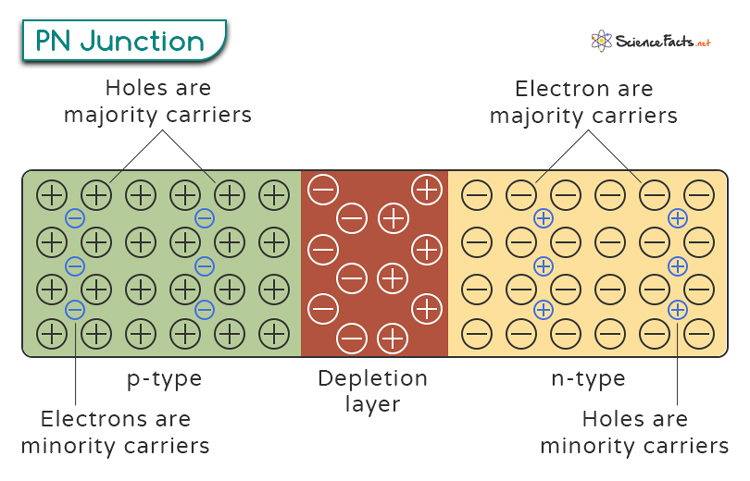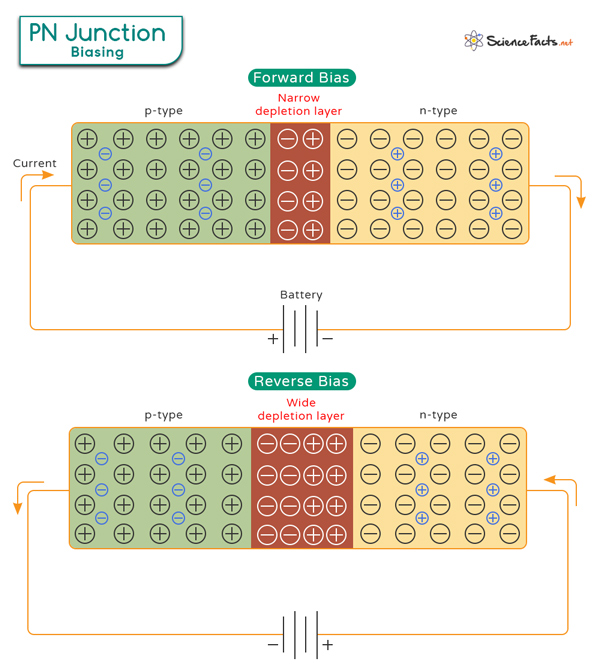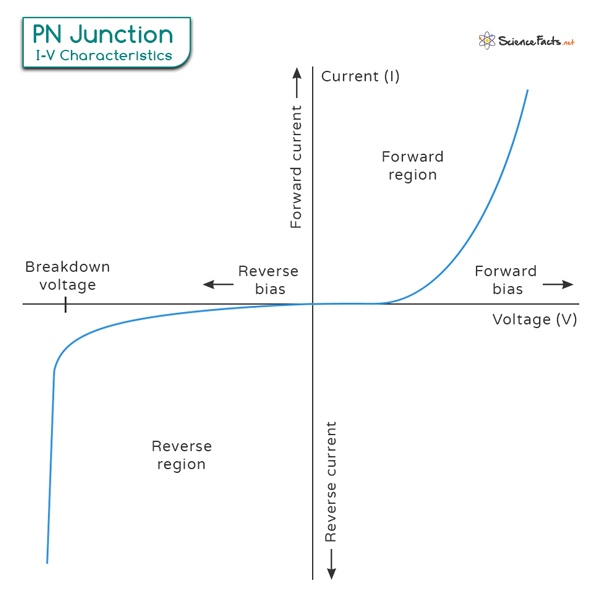Depletion Region
Biasing of PN Junction
I-V Characteristics of a PN Junction Diode
Applications of PN Junction Diode
As a rectifier, which converts Alternating Current to Direct CurrentAs a Zener diode that is used in circuits for voltage regulationAs a fundamental building block for the construction and operation of PNP transistor and NPN transistor, which contain multiple PN junctions.As switches in electrical circuits that turn smaller circuits on and off within more complex systems. This feature comes from the fact that diodes only allow current to pass in the forward bias direction.As a photodiode during a reverse bias operation because it is sensitive to lightAs an LED, which emits light when in forward bias
We can draw an analogy based on the behavior of charge carriers. Imagine a wall and people attempting to cross it. The barrier is similar to the wall, and the free charge carriers are like people.
Forward Bias
Forward bias refers to the situation where the positive terminal of a battery connects to the P-type region, and the negative terminal connects to the N-type region of a PN junction. As a result, the barrier across the PN junction is reduced, diminishing the resistance and allowing for a more effortless flow of charge carriers across both regions. Electrons from the N-type semiconductor move toward the P-type semiconductor, and holes from the P-type semiconductor move toward the N-type semiconductor. This is like lowering the height of our imaginary wall, making it easier for people to cross. This movement of charge carriers constitutes an electric current in a diode, a simple semiconductor device based on a PN junction.
Reverse Bias
During reverse bias, the positive terminal of the battery is connected to the N-type semiconductor, and the negative terminal is connected to the P-type semiconductor. The external voltage enhances the barrier that naturally exists at the junction in an unbiased state, making it very hard for charge carriers to cross. Again, we can bring the wall analogy. Increasing the height of the wall makes it difficult for people to cross. Because of the high resistance, the current is limited to a minimum value in the diode.
Equilibrium State
The equilibrium state is the condition when a depletion region forms in the diode. In this state, there is minimal current flow across the junction as the diffusion of carriers is balanced by the built-in potential.
Forward Bias Behavior
When the diode is forward-biased, the barrier is lowered. At first, a small current starts to flow. As the voltage increases, a lot more current flows because more charge carriers help conduct the electricity. In this state, the diode has low resistance and lets much current pass through.
Reverse Bias Behavior
Reverse bias increases the barrier, preventing the majority charge carriers from easily crossing the junction and resulting in minimal current flow. This tiny current is known as reverse leakage current. It occurs because minority carriers (holes from the N-region and electrons from the P-region) still move across the junction. This leakage current can be considered negligible compared to the forward bias condition. The reverse-biased PN junction exhibits high electrical resistance, and the diode is an insulator to the applied voltage until the voltage reaches a limit. Breakdown When the reverse voltage on the diode becomes too high, the current suddenly increases, causing the diode to lose its ability to block current. This phenomenon is called breakdown, and the voltage at which it happens is called the breakdown voltage. Learn more about breakdown in Zener diode.


